Moira Butterfield's Blog, page 59
December 10, 2015
'Refuge', a book for Now. Guest blog by Anne Booth
We're delighted to welcome Anne Booth as our guest blogger at a moment when her new picture book, 'Refuge', couldn't be more apt. Written in response to the current refugee crisis, this simple re-telling of the Nativity story has clear resonance for us now. Very beautifully illustrated by Sam Usher and published by Nosy Crow, £5 from every copy sold is going to the War Child charity to help today's child refugees. Over to Anne ...
This is a very special year for me, as I turned 50 and had my first two picture books published, and now have been invited to write a post for the Picture Book Den!
My very first book contract was with Nosy Crow Books for two picture books : ‘The Fairiest Fairy’ and ‘The Christmas Fairy’, both illustrated by the wonderful Rosalind Beardshaw. As a new writer I was amazed at how long it normally takes to produce a picture book - the contract was in 2013 and ‘The Fairiest Fairy’ was only published in 2015, with ‘The Christmas Fairy in 2016! I learnt how it is definitely worth the wait and am bursting with pride at the result - to see Betty illustrated so beautifully by Rosalind has been one of the highlights of my life.
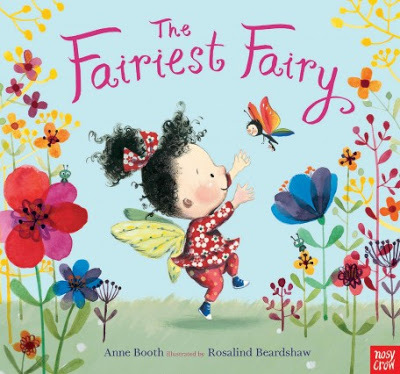
You can read inside here: http://nosycrow.com/product/the-fairiest-fairy/ I particularly love the spread where Betty puts on her vest - it was everything I imagined and more!
So, having got my head around how long the process is to publish a picture book, you can imagine how amazed I am at how fast my latest book ‘Refuge’ has been produced. You can read about the process here and read inside to see the actual illustrations: http://nosycrow.com/blog/the-story-behind-refuge/

For those of you who know from first hand about the process - Samuel Usher’s illustrations - his palette and his tender lines - and the sheer achievement of producing such stunning work so quickly - will seem particularly miraculous. Added to that the wonderful design of the book, and the high quality of the finished product, and the generous way all those involved in the production and distribution did it for free or at vastly reduced costs, the publishing story of this picture book seems unique.

Just as the muddled Betty has more than a little of me in her, ‘Refuge’ means a lot to me personally. One of my earliest memories is toddling into the life size crib at church and throwing my arms around the donkey. Every Christmas when I was small I would run inside the crib to hug him - so it is fitting that I have written a book from the Christmas donkey’s point of view, to be enjoyed by little children and adults sharing it with them, and which hopefully will raise empathy and money for child refugees. I may have been having a wonderful year being 50, but for so many refugees it has been hell. Childhood should be full of lovely memories, like reading picture books and hugging donkeys - real or in church cribs - not of war and dangerous journeys.

I did not expect, in the year I turned 50, to have two picture books published, and illustrated by such great artists as Rosalind Beardshaw and Samuel Usher. In this, as in so many aspects of my life, I feel very, very lucky - and I feel so happy and grateful that, thanks to Nosy Crow and Samuel Usher and all involved in the process, ‘Refuge’ - a beautiful picture book - one of the things which gives me the most joy in life - has become the means to help refugees this Christmas.

This is a very special year for me, as I turned 50 and had my first two picture books published, and now have been invited to write a post for the Picture Book Den!
My very first book contract was with Nosy Crow Books for two picture books : ‘The Fairiest Fairy’ and ‘The Christmas Fairy’, both illustrated by the wonderful Rosalind Beardshaw. As a new writer I was amazed at how long it normally takes to produce a picture book - the contract was in 2013 and ‘The Fairiest Fairy’ was only published in 2015, with ‘The Christmas Fairy in 2016! I learnt how it is definitely worth the wait and am bursting with pride at the result - to see Betty illustrated so beautifully by Rosalind has been one of the highlights of my life.

You can read inside here: http://nosycrow.com/product/the-fairiest-fairy/ I particularly love the spread where Betty puts on her vest - it was everything I imagined and more!
So, having got my head around how long the process is to publish a picture book, you can imagine how amazed I am at how fast my latest book ‘Refuge’ has been produced. You can read about the process here and read inside to see the actual illustrations: http://nosycrow.com/blog/the-story-behind-refuge/

For those of you who know from first hand about the process - Samuel Usher’s illustrations - his palette and his tender lines - and the sheer achievement of producing such stunning work so quickly - will seem particularly miraculous. Added to that the wonderful design of the book, and the high quality of the finished product, and the generous way all those involved in the production and distribution did it for free or at vastly reduced costs, the publishing story of this picture book seems unique.

Just as the muddled Betty has more than a little of me in her, ‘Refuge’ means a lot to me personally. One of my earliest memories is toddling into the life size crib at church and throwing my arms around the donkey. Every Christmas when I was small I would run inside the crib to hug him - so it is fitting that I have written a book from the Christmas donkey’s point of view, to be enjoyed by little children and adults sharing it with them, and which hopefully will raise empathy and money for child refugees. I may have been having a wonderful year being 50, but for so many refugees it has been hell. Childhood should be full of lovely memories, like reading picture books and hugging donkeys - real or in church cribs - not of war and dangerous journeys.

I did not expect, in the year I turned 50, to have two picture books published, and illustrated by such great artists as Rosalind Beardshaw and Samuel Usher. In this, as in so many aspects of my life, I feel very, very lucky - and I feel so happy and grateful that, thanks to Nosy Crow and Samuel Usher and all involved in the process, ‘Refuge’ - a beautiful picture book - one of the things which gives me the most joy in life - has become the means to help refugees this Christmas.

Published on December 10, 2015 16:30
December 5, 2015
Writers' Retreats by Abie Longstaff
Last weekend I went away to a farm in the middle of nowhere with 17 other authors.
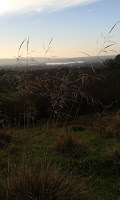
We meet up regularly through the year via the Scattered Authors' Society (which I thoroughly recommend joining). In February we meet to talk about business (I've posted about the 2014 meet up here). In November we meet to talk about creativity.
It's a lovely escape from normal life. We spend the three days playing - finding what inspires us or motivates us. We run our own workshops and this year we had:
Jen Alexander unlocking our subconscious to find images that would help us write
Liz Kessler describing the journey of a book that was heavily influenced by music
Jackie Marchant sharing her techniques for world-building
A group of authors being frank about the commercial pressures of writing
Lucy Coats leading us through a meditation
Steve Gladwin encouraging character building through drama
June Crebbin exploring poetry
In between the workshops we had cosy chats by the fire
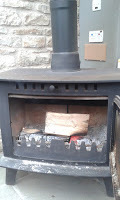
long walks
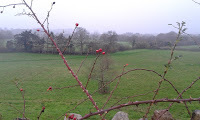
and plenty of cake.
This year I led a workshop on 'shaping' - it's not quite plotting (because I'm not a detailed plotter) it's more about seeing the arc or structure of a story. I use a picture book approach - setting out 12 spreads for all my books, even longer fiction ones. I find that being forced to select the 12 most important aspects (in terms of emotional plot or action plot) makes me prioritise.
I use a grid spread like this
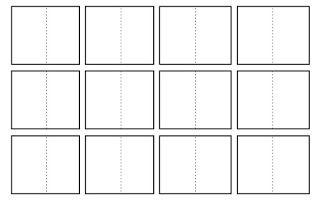 There is a link to the PDF of this here in case you want to use it
There is a link to the PDF of this here in case you want to use it
and I plot out a common book structure on it - so you might have:
Spread 1 Set up – introduce charactersSpread 2 What is the problem? (think in terms of the practical problem and its emotional effect)Spread 3-10 The problem grows Magic 3? Increase to climaxSpread 11 SolutionSpread 12 Satisfying ending Bedtime/party Can have a twist I find this method helps me see the shape and flow of the book; where the high and low points are, where the character development happens.
Sometimes I find it useful to plot out someone else's book to see their structure. Here is Pride and Prejudice by Jane Austen plotted out (messily) in 12 spreads:
 I found everyone's workshops so inspiring. I love hearing how other authors write; how they come up with ideas, how they move on when they feel blocked. I tend to be quite a practical person - my approach is logical with plans and grids and lists - so it's wonderful to let go and listen to music or bird song and let the ideas come from somewhere deep down, in another part of my brain. Sometimes the necessary commercial aspect of our job means we forget to refill our creative well and I always come back from the retreat refreshed and full of joy for the career I've chosen.
I found everyone's workshops so inspiring. I love hearing how other authors write; how they come up with ideas, how they move on when they feel blocked. I tend to be quite a practical person - my approach is logical with plans and grids and lists - so it's wonderful to let go and listen to music or bird song and let the ideas come from somewhere deep down, in another part of my brain. Sometimes the necessary commercial aspect of our job means we forget to refill our creative well and I always come back from the retreat refreshed and full of joy for the career I've chosen.
We end with an evening where we each read aloud from our work and it's fascinating to hear the range of texts, from picture book to novel, and genre, from zombies to romance.
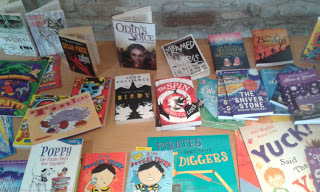 I always work better in winter when the weather is cold so, after the retreat, I'm inside, snuggled up, ready to go.
I always work better in winter when the weather is cold so, after the retreat, I'm inside, snuggled up, ready to go.

We meet up regularly through the year via the Scattered Authors' Society (which I thoroughly recommend joining). In February we meet to talk about business (I've posted about the 2014 meet up here). In November we meet to talk about creativity.
It's a lovely escape from normal life. We spend the three days playing - finding what inspires us or motivates us. We run our own workshops and this year we had:
Jen Alexander unlocking our subconscious to find images that would help us write
Liz Kessler describing the journey of a book that was heavily influenced by music
Jackie Marchant sharing her techniques for world-building
A group of authors being frank about the commercial pressures of writing
Lucy Coats leading us through a meditation
Steve Gladwin encouraging character building through drama
June Crebbin exploring poetry
In between the workshops we had cosy chats by the fire

long walks

and plenty of cake.
This year I led a workshop on 'shaping' - it's not quite plotting (because I'm not a detailed plotter) it's more about seeing the arc or structure of a story. I use a picture book approach - setting out 12 spreads for all my books, even longer fiction ones. I find that being forced to select the 12 most important aspects (in terms of emotional plot or action plot) makes me prioritise.
I use a grid spread like this
 There is a link to the PDF of this here in case you want to use it
There is a link to the PDF of this here in case you want to use itand I plot out a common book structure on it - so you might have:
Spread 1 Set up – introduce charactersSpread 2 What is the problem? (think in terms of the practical problem and its emotional effect)Spread 3-10 The problem grows Magic 3? Increase to climaxSpread 11 SolutionSpread 12 Satisfying ending Bedtime/party Can have a twist I find this method helps me see the shape and flow of the book; where the high and low points are, where the character development happens.
Sometimes I find it useful to plot out someone else's book to see their structure. Here is Pride and Prejudice by Jane Austen plotted out (messily) in 12 spreads:
 I found everyone's workshops so inspiring. I love hearing how other authors write; how they come up with ideas, how they move on when they feel blocked. I tend to be quite a practical person - my approach is logical with plans and grids and lists - so it's wonderful to let go and listen to music or bird song and let the ideas come from somewhere deep down, in another part of my brain. Sometimes the necessary commercial aspect of our job means we forget to refill our creative well and I always come back from the retreat refreshed and full of joy for the career I've chosen.
I found everyone's workshops so inspiring. I love hearing how other authors write; how they come up with ideas, how they move on when they feel blocked. I tend to be quite a practical person - my approach is logical with plans and grids and lists - so it's wonderful to let go and listen to music or bird song and let the ideas come from somewhere deep down, in another part of my brain. Sometimes the necessary commercial aspect of our job means we forget to refill our creative well and I always come back from the retreat refreshed and full of joy for the career I've chosen.We end with an evening where we each read aloud from our work and it's fascinating to hear the range of texts, from picture book to novel, and genre, from zombies to romance.
 I always work better in winter when the weather is cold so, after the retreat, I'm inside, snuggled up, ready to go.
I always work better in winter when the weather is cold so, after the retreat, I'm inside, snuggled up, ready to go.
Published on December 05, 2015 23:17
November 30, 2015
Why Reading Picture Books Matters - by Natascha Biebow
The brains of three to five year-olds do something really important when they read a picture book:
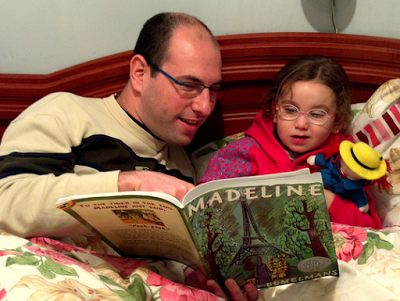
Their neurons do a kind of brain gym that develops their ability to experience things from other people’s perspectives – or empathise .
This is because, at this age, children are acquiring a theory-of-mind – an understanding that other people have thoughts, beliefs, and desires that may be different from their own.
Dr. Raymond Mar, a psychologist at York University in Canada, says, “Around the same ages, children also begin to understand what characters in stories are feeling and thinking.”

Theory-of-mind tests include testing if a child is able to understand that someone may prefer broccoli over a cookie
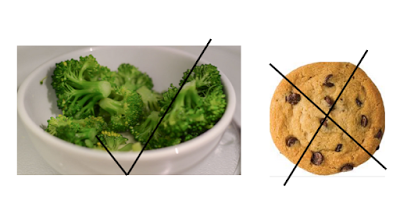
and how that is unique from their own desire for the cookie.
In 2010, Mar and his colleagues found that:

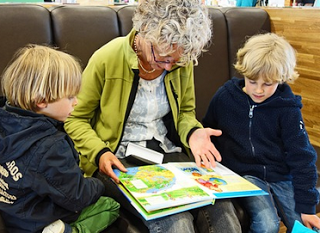
Mar and his colleagues also found that parents who were able to recognize children’s authors and book titles predicted their child’s performance on theory-of-mind tests. Parental recognition of adult book titles or authors had no effect on their child’s performance — the result was very specific to children’s books.
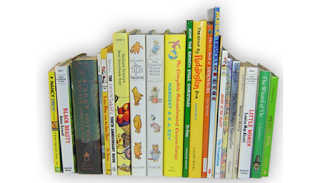
“There are aspects of joint-reading between parents and children that seem to be important to the process,” Mar said.
This may be because when they read books together with their children, adults discuss how the characters are feeling, perhaps more so than at other times in daily life.
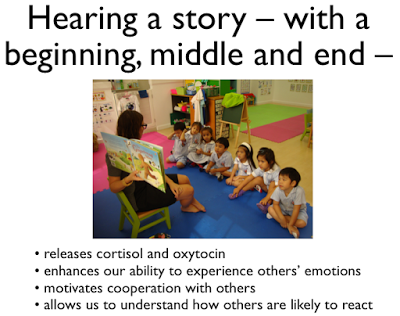
Researchers have also shown that children who watch a lot of TV, as opposed to reading storybooks, have a weaker understanding of other people's beliefs and desires, a lesser ability to be compassionate and reduced cognitive development.
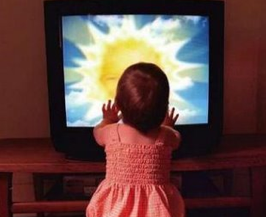
SO reading picture books and stories provides a means to muscle up children’s empathy network. Studies have also shown this is true for teens and adults, too.
If we don’t use it, we could lose it . . .
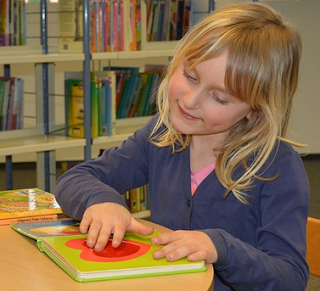
In these troubled times, a world with empathy is the world I want for my children.
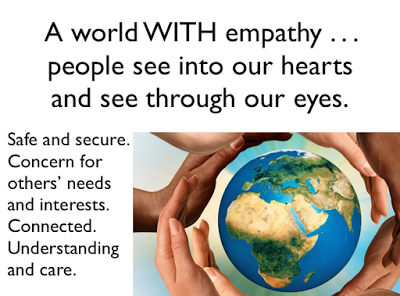
Natascha BiebowAuthor, Editor and Mentor
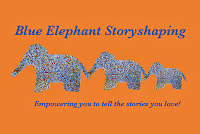 Blue Elephant Storyshaping is an editing, coaching and mentoring service aimed at empowering writers and illustrators to fine-tune their work pre-submission. Check out my small-group coaching Cook Up a Picture Book courses!
Blue Elephant Storyshaping is an editing, coaching and mentoring service aimed at empowering writers and illustrators to fine-tune their work pre-submission. Check out my small-group coaching Cook Up a Picture Book courses!
Natascha is also the author of Elephants Never Forget and Is This My Nose?, editor of numerous award-winning children’s books, and Regional Advisor (Chair) of SCBWI British Isles. www.blueelephantstoryshaping.com

Their neurons do a kind of brain gym that develops their ability to experience things from other people’s perspectives – or empathise .
This is because, at this age, children are acquiring a theory-of-mind – an understanding that other people have thoughts, beliefs, and desires that may be different from their own.
Dr. Raymond Mar, a psychologist at York University in Canada, says, “Around the same ages, children also begin to understand what characters in stories are feeling and thinking.”

Theory-of-mind tests include testing if a child is able to understand that someone may prefer broccoli over a cookie

and how that is unique from their own desire for the cookie.
In 2010, Mar and his colleagues found that:


Mar and his colleagues also found that parents who were able to recognize children’s authors and book titles predicted their child’s performance on theory-of-mind tests. Parental recognition of adult book titles or authors had no effect on their child’s performance — the result was very specific to children’s books.

“There are aspects of joint-reading between parents and children that seem to be important to the process,” Mar said.
This may be because when they read books together with their children, adults discuss how the characters are feeling, perhaps more so than at other times in daily life.

Researchers have also shown that children who watch a lot of TV, as opposed to reading storybooks, have a weaker understanding of other people's beliefs and desires, a lesser ability to be compassionate and reduced cognitive development.

SO reading picture books and stories provides a means to muscle up children’s empathy network. Studies have also shown this is true for teens and adults, too.
If we don’t use it, we could lose it . . .

In these troubled times, a world with empathy is the world I want for my children.

Natascha BiebowAuthor, Editor and Mentor
 Blue Elephant Storyshaping is an editing, coaching and mentoring service aimed at empowering writers and illustrators to fine-tune their work pre-submission. Check out my small-group coaching Cook Up a Picture Book courses!
Blue Elephant Storyshaping is an editing, coaching and mentoring service aimed at empowering writers and illustrators to fine-tune their work pre-submission. Check out my small-group coaching Cook Up a Picture Book courses!Natascha is also the author of Elephants Never Forget and Is This My Nose?, editor of numerous award-winning children’s books, and Regional Advisor (Chair) of SCBWI British Isles. www.blueelephantstoryshaping.com
Published on November 30, 2015 20:00
November 26, 2015
Tweak or Give Up? - Some dodgy advice from yer uncle Jon - by Jonathan Allen
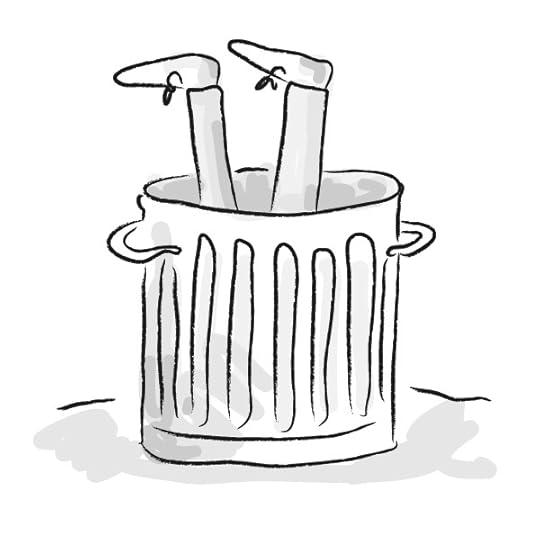
Finally sending an idea out to an agent or a publisher is always an act of faith. Faith in your own ability and in your own judgement. The trouble is that when ideas get turned down it can make this faith seem completely misguided. . . That depends on your mental resilience of course. I always say, somewhat flippantly, that there are two ways people react to rejection, one is to conclude that they are total rubbish and have rubbish ideas, and the other is to take the attitude that 'the fools don't appreciate my genius'!
The latter is probably better for your sanity, but rather too close to delusion perhaps, and the former is just defeatist.
Having faith in your own judgement is a big part of being a writer, (and any other kind of creator or maker) and that faith is a fragile thing so you have to look after it ;-)
Easier said than done, I know.
Rejection is part and parcel of being a writer, it's not pleasant, but its a fact of life and has to be accepted as such otherwise no one would ever send their precious ideas out into the world at all.
So us writers and illustrators work hard on our ideas, tweaking and revising to make them into something a publisher can look at and see how they would work as books. The difficult bit is knowing when an idea has reached that point, knowing when to stop tweaking the idea and submit it. Knowing when to jump. . . Is it underworked or overworked? Too loose or too prescriptive?
You hope you have worked hard enough and got the idea as 'right' as you can get it because once something has been turned down, you can't really tweak it and send it in to the same person again to see if they like it with your added 'improvements'. They won't have the time or patience for that.
There are no doubt exceptions to this, but generally, if a publisher or agent is interested in an idea they will make some allowances, and will often suggest ways to make it work better if such is needed. If they aren't interested, they won't be willing to spend their precious time analysing it and telling you why it doesn't appeal.
So, do you tweak your idea and send it to someone else?
The trouble is, it is impossible to know why an idea gets rejected. There may be two people in a meeting who are mad about it, but three who weren't keen. There may be two really good ideas on the table and only one slot in the Spring list, so someone has to lose out. Or it may be because your idea is rubbish and nobody in their right mind would touch it with a barge pole. . . It's unknowable, so really it's not useful to speculate too much. Also, to complicate things still further, your 'improvements' might not enhance the idea at all, and the next person to see it may have preferred the first or untweaked version had they seen it. . . Or not. . . You could drive yourself nuts with this stuff.
So really, you have to put the effort in and have faith. Get an idea to the point where you like it and you think it 'works', then let it go knowing you have done your best. If it doesn't find a publisher, move on. You will keep having ideas.
Some might be rubbish ideas, as writers can easily be too close to an idea to fully judge its value, and of course the last thing you'll have wanted is to have spent your precious time and energy in the ultimately futile pursuit of a rubbish idea. But on the other hand, often the only way you can get an idea to the point where you can make some kind of judgement of its worth, is by putting the time and energy in and seeing how it turns out. 'Wasted' time is a given. It's part of the deal.
Only you can decide if your continued faith in an oft rejected idea is misplaced. You may get a flash of inspiration and find the perfect way of making your idea work, or you might find that you have just added more wasted time to time previously wasted. Are you being laudably persistent or are you flogging a long dead horse? I've been in both situations so I can't really offer useful advice on how to tell the difference other than by the result, or lack of it.
Basically I think we are all winging it and hoping for the best, argubly from an increasingly informed perspective as time goes on, but don't quote me on that. ;-)
Good luck btw. . .
Published on November 26, 2015 00:30
November 20, 2015
Looking at the illustration of eyes in children's picture books - Paeony Lewis
Four talented professional illustrators have helped enormously with this blog post on the illustration of eyes. Huge thanks to Jonathan Allen,
Penny Ives
,
Bridget Marzo
and John Shelley. Without you, my musings would have been paltry!
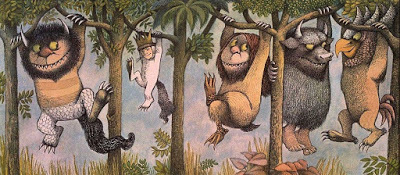 From Where the Wild Things Are by Maurice Sendak
From Where the Wild Things Are by Maurice Sendak
Imagine if those monsters looked directly at you…Eyes may take up only a tiny part of an illustration, but they say so much and it’s vital to get them right. Have you noticed how Max's monsters in the classic Where the Wild Things Are never look directly at the reader? How scary it would be for a child if they did look at us!
Eyes can have such huge impact, regardless of how minimal the illustration. In This Is Not My Hat, part of the story is told through tiny changes in the eyes of the big fish. From the story text we know the little fish steals the hat of the big fish and thinks he won't notice. However, although we're not told anything in the text, through just the eyes of the big fish we see him wake up and discover his hat is gone and obviously he wants it back. It’s stylish and very effective.
 Four excerpts from the pages of This Is Not My Hat by Jon Klassen (Walker Books, 2012)
Four excerpts from the pages of This Is Not My Hat by Jon Klassen (Walker Books, 2012)
With just a few strokes of the pen or brush, really subtle emotions can be seen in eyes. In No More Yawning! (I'll admit it's by me!), the illustrator, Brita Granstrom, portrays an emotional scene between mother and daughter with the barest of marks. I won't say what's happening - can you guess the emotions? The answer is at the very bottom of this blog post.
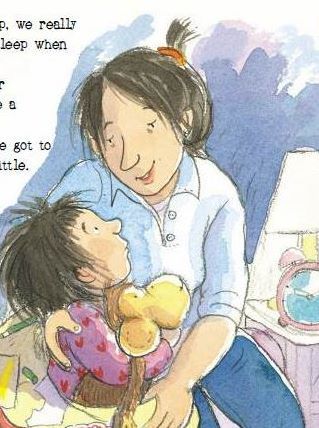 Excerpt from No More Yawning! by Paeony Lewis,
Excerpt from No More Yawning! by Paeony Lewis,
illustrated by Brita Granstrom (Chicken House, 2008)
In this image from No More Yawning! Brita's watercolour illustration reflected the words of the story. However, sometimes this isn't the case. I often smile when there's the need in a story for the text to say one thing and the eyes of a character tell us something else. The interplay of words and illustrations can be such fun. In the example below the eyes show us that the zebra's words are said with resignation. Given a choice the zebra wouldn't do it again, but he wants the moose to be happy (rather like a parent and child!).
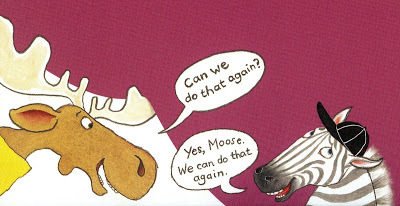 From Z is for Moose by Kelly Bingham, illustrated by Paul O. Zelinsky (Andersen Press, 2013)
From Z is for Moose by Kelly Bingham, illustrated by Paul O. Zelinsky (Andersen Press, 2013)
So why have I been looking at the eyes of characters in picture books? Although I'm an author and definitely not a professional illustrator, for a few years I’ve been studying art and in class next week I'll be sketching and painting two characters from one of my stories. It was this that got me thinking about eyes.
I knew I didn’t want realistic eyes for my characters. Instead, should I use small dots or big dots? Should they be round, oval, square or just lines? Or how about big eyes with pupils as these can be really expressive?
 Excerpt from Pom Pom gets the Grumps by Sophy Henn (Puffin, 2015).
Excerpt from Pom Pom gets the Grumps by Sophy Henn (Puffin, 2015).
These pandas have very expressive eyes.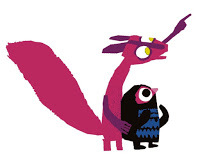 Owl and Squirrel have big eyes in
Owl and Squirrel have big eyes in
A Bit Lost by Chris Haughton
(Walker Books, 2010)
At first I thought I’d use big eyes as they seem popular. Human babies have big cute eyes. This appealing trait is reflected in manga and anime, the Powerpuff Girls and Bratz dolls, Teletubbies, Muppets, Elsa and Anna in Frozen, Mickey Mouse... Etc, etc.! Nobody ever said: “Oh, what lovely small eyes you have.” Instead, we might use eye makeup to make our eyes look bigger and more attractive.
However, if having big expressive eyes were a prerequisite for picture books then that doesn’t explain why beady-eyed mice, bears and elephants are also popular characters, or why many illustrators use small dots for eyes. So maybe I should consider dot eyes too. Ho hum, I think I’ll talk to some professional illustrators. They’ll know much, much more than me! To begin, here's a lovely introduction by Penny Ives...
Penny Ives

Two little black ink dots and there we are: a pair of eyes.
But move the dots closer together, up or down or round by the ears and everything changes.
Enlarge them to the size of saucers or miss one out and we have a spaced out pussy or my cat Fozzie who sadly is minus one eye these days.
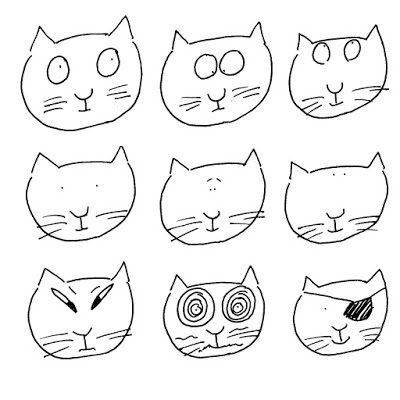 Simple cat eyes © Penny Ives, 2015
Simple cat eyes © Penny Ives, 2015
To achieve the right look for both the cat in the red suit and Miss Austen, and all eyes in the right place, I used the method outlined below.
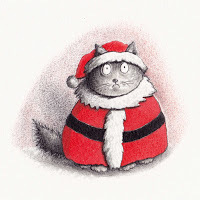 The Red Suit © Penny Ives
The Red Suit © Penny Ives
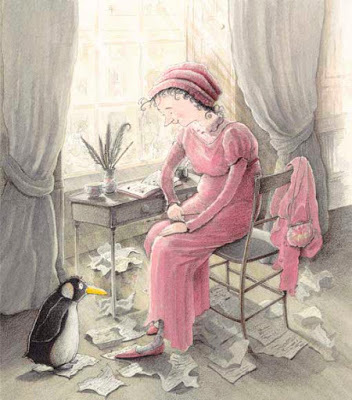 Miss Austen and the Penguin © Penny Ives, 2015
Miss Austen and the Penguin © Penny Ives, 2015
First draw a circle.
Put two dots on small pieces of tracing paper.Move them around over your circle.Voila!A face with eyes!Or you can use Photoshop of course!
But it's amazing what two ink dots can do.
Jonathan Allen

The eyes are the window to the soul, etc, etc. As far as drawing eyes goes, I subscribe to the 'circle with a dot in it' approach. What I call ‘Beano’ eyes, after the comic of that name. I don’t go for the single dot approach because for me it is too limiting and emotionally distant. I have no argument with artists like Quentin Blake and Margaret Chamberlain who use the dot method, but it doesn’t suit me. It’s ‘Beano’ eyes for me every time.
I prefer the way the 'circle with a dot in it' method delivers a range of subtle emotions and describes personality. My drawings are all about facial expression. Take that away and you don’t have much really. The eyes are the point of engagement for the viewer.
For an incredibly crude and simple representation of the ‘human’ eye it is amazingly versatile in what it can express, (along with eyebrows and the mouth). The shape of the eye, the size of the dot and its position are the crucial things. Even subtle variations of these can change the emotion an expression carries. This subtlety means that you can move away from the generic Happy or Sad expressions and into expressions that say things like “I know you think that’s funny, but actually it upset me but I’m trying not to show it.” Or “I’m not supposed to be here but I’ll act innocent and see if I can get away with it.”Here’s a very quick illustration of the same face with just the eyes changed to ‘illustrate’ my point. Sort of.
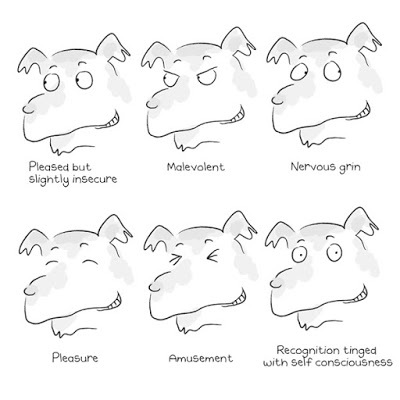 Dog eyes © Jonathan Allen, 2015
Dog eyes © Jonathan Allen, 2015
John Shelley

I sometimes use sweeping point-of-view changes in picture books, sometimes changing from panoramic views to close-ups. This makes the drawing of eyes a bit awkward, dots work well at distance but for me are a bit too sparse for a close-up. At what point do you change a dot eye to a more fully formed one for the same character, and is there an interim stage?
 Dot eyes used in advertising
Dot eyes used in advertising
on ski train in Japan, by John ShelleyFor many years I drew fully formed eyes with whites, pupils, irises etc whenever possible, only using dot eyes for figures at a distance. For middle-ground figures this would be a black dot pupil, with a grey line defining a rounded upper eyelid giving space for the whites of eyes, though for close-ups I’d paint the iris, pupil and lids. I was happy with this, though sometimes the white of eyes became too prominent in the mid-ground and I remember Klaus Flugge told me how much he hated 'Disney eyes'. I had to be careful my figures didn’t always carry a permanent expression of surprise, and always avoided 'goggle-eyes' as you often see in American animation. When I started doing a lot of advertising in Japan my figures in my more graphic ‘commercial’ style became much simpler and I almost always just used dots for eyes.
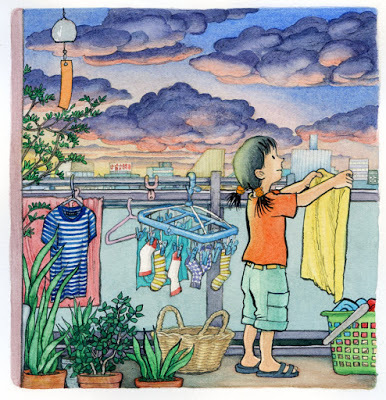 Above and below:
Above and below:
I've just finished painting my latest book (Japanese publisher, 2016):
Yozora o Miyage-yo (Let's Look at the Night Sky), illustrated by John Shelley.
A combination of dots and dots within eye whites are used.
Nowadays I use a combination of developed eyes or dots, it depends on the detail in the project. I draw fully formed eyes for non-fiction historical work like Stone Giant or Will’s Words, but for character-based picture-book fiction I’m turning more to just using dot eyes, though I still show eye whites for closer and mid-ground figures, the definition being shown just with paint rather than drawn eyelids. However I still have that problem of what to do for close-ups. I think if I were to do a book with small figures throughout I’d probably just use dots, but the more panning and close-ups there are involved, the more uncomfortable I am with just using dots.
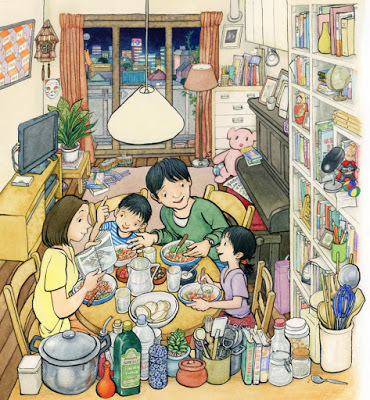
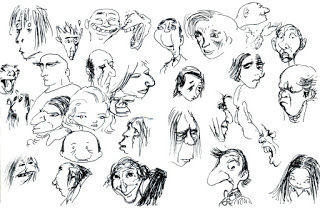 Doddles from sketch book, © John Shelley
Doddles from sketch book, © John Shelley
The other thing is positioning of eyes on a face - in Japan I learned quickly about 'Hello Kitty' - it’s the baby-face effect, how facial features that are lower on the head and with eyes slightly apart, appeal to our innate attraction to baby faces. It’s everywhere in Japan, and is pretty well a formula now. Use sparingly! I like to doodle with different proportions and position of facial features in sketchbooks, it’s so much fun to just push the proportions to see what you come up with - they may not be ‘attractive’ figures, but are definitely full of character.
Bridget Marzo

Of all subjects to do with illustration the question of eyes is closest to my heart.
For me it’s not so much about the ‘how’ - the styles - fashions for representing eyes which range from the realistic to the round or dot eye.
Much more important is the ‘why’ - the intention of the characters in the story or the purpose of the book.
For stories it’s the direction of the gaze, where the characters are looking, that matters. It can even be a device to prompt a story. Sometimes I’ll doodle two characters and play with eye direction. Giving a direction to a gaze by placing a dot in one corner or another of a eye socket is a key way to create a relationship between characters or reveal their view of the world. Actors know this. Follow a gaze and see how a character connects, or not, to others or to what they are doing. This is how Tiz and Ott first came to life, as I explored the way they reacted, or not, to each other.

When I run character drawing workshops for children and adults I’ll suggest a ‘quick draw’ recipe which includes drawing simple circles for eye sockets. The fun comes at the end when we add the dots for pupils in a specific direction. The characters come alive and it is as if you can read their thoughts. Are the characters making contact with each other or not? Is a character avoiding eye contact for some reason? Perhaps they are feeling shy, exasperated or guilty. Or are the characters literally 'seeing eye to eye'?
Give the eyes a direction and it may lead your characters in a direction through a story.
____________
Again, huge thanks to Jonathan Allen, Penny Ives, Bridget Marzo and John Shelley. Please click their names to find out more.
Now I must decide how to illustrate the eyes of my two characters. It's time to experiment!
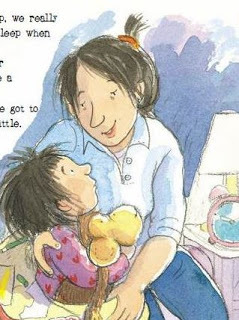 From No More Yawning!
From No More Yawning!
by Paeony Lewis, illus by Brita GranstromFinally (really!), at the beginning I suggested you guess the emotions of Mum and her daughter, Florence, as painted by Brita Granstrom. I wonder what you thought?!
In fact, at this stage in the story it's late and Mum is very tired and Florence won't/can't fall asleep. Florence is still feeling a little sad and pensive because Mum shouted at her on the previous page. Mum is now feeling lovingly guilty and is trying to reassure Florence by telling how she got to sleep when she was a little girl. I adore the way Florence's monkey reflects Florence.

If you have any thoughts on the illustration of eyes then it'll be great to read your comments.
Paeony Lewis
 From Where the Wild Things Are by Maurice Sendak
From Where the Wild Things Are by Maurice SendakImagine if those monsters looked directly at you…Eyes may take up only a tiny part of an illustration, but they say so much and it’s vital to get them right. Have you noticed how Max's monsters in the classic Where the Wild Things Are never look directly at the reader? How scary it would be for a child if they did look at us!
Eyes can have such huge impact, regardless of how minimal the illustration. In This Is Not My Hat, part of the story is told through tiny changes in the eyes of the big fish. From the story text we know the little fish steals the hat of the big fish and thinks he won't notice. However, although we're not told anything in the text, through just the eyes of the big fish we see him wake up and discover his hat is gone and obviously he wants it back. It’s stylish and very effective.
 Four excerpts from the pages of This Is Not My Hat by Jon Klassen (Walker Books, 2012)
Four excerpts from the pages of This Is Not My Hat by Jon Klassen (Walker Books, 2012)With just a few strokes of the pen or brush, really subtle emotions can be seen in eyes. In No More Yawning! (I'll admit it's by me!), the illustrator, Brita Granstrom, portrays an emotional scene between mother and daughter with the barest of marks. I won't say what's happening - can you guess the emotions? The answer is at the very bottom of this blog post.
 Excerpt from No More Yawning! by Paeony Lewis,
Excerpt from No More Yawning! by Paeony Lewis, illustrated by Brita Granstrom (Chicken House, 2008)
In this image from No More Yawning! Brita's watercolour illustration reflected the words of the story. However, sometimes this isn't the case. I often smile when there's the need in a story for the text to say one thing and the eyes of a character tell us something else. The interplay of words and illustrations can be such fun. In the example below the eyes show us that the zebra's words are said with resignation. Given a choice the zebra wouldn't do it again, but he wants the moose to be happy (rather like a parent and child!).
 From Z is for Moose by Kelly Bingham, illustrated by Paul O. Zelinsky (Andersen Press, 2013)
From Z is for Moose by Kelly Bingham, illustrated by Paul O. Zelinsky (Andersen Press, 2013)So why have I been looking at the eyes of characters in picture books? Although I'm an author and definitely not a professional illustrator, for a few years I’ve been studying art and in class next week I'll be sketching and painting two characters from one of my stories. It was this that got me thinking about eyes.
I knew I didn’t want realistic eyes for my characters. Instead, should I use small dots or big dots? Should they be round, oval, square or just lines? Or how about big eyes with pupils as these can be really expressive?
 Excerpt from Pom Pom gets the Grumps by Sophy Henn (Puffin, 2015).
Excerpt from Pom Pom gets the Grumps by Sophy Henn (Puffin, 2015).These pandas have very expressive eyes.
 Owl and Squirrel have big eyes in
Owl and Squirrel have big eyes in A Bit Lost by Chris Haughton
(Walker Books, 2010)
At first I thought I’d use big eyes as they seem popular. Human babies have big cute eyes. This appealing trait is reflected in manga and anime, the Powerpuff Girls and Bratz dolls, Teletubbies, Muppets, Elsa and Anna in Frozen, Mickey Mouse... Etc, etc.! Nobody ever said: “Oh, what lovely small eyes you have.” Instead, we might use eye makeup to make our eyes look bigger and more attractive.
However, if having big expressive eyes were a prerequisite for picture books then that doesn’t explain why beady-eyed mice, bears and elephants are also popular characters, or why many illustrators use small dots for eyes. So maybe I should consider dot eyes too. Ho hum, I think I’ll talk to some professional illustrators. They’ll know much, much more than me! To begin, here's a lovely introduction by Penny Ives...
Penny Ives

Two little black ink dots and there we are: a pair of eyes.
But move the dots closer together, up or down or round by the ears and everything changes.
Enlarge them to the size of saucers or miss one out and we have a spaced out pussy or my cat Fozzie who sadly is minus one eye these days.
 Simple cat eyes © Penny Ives, 2015
Simple cat eyes © Penny Ives, 2015To achieve the right look for both the cat in the red suit and Miss Austen, and all eyes in the right place, I used the method outlined below.
 The Red Suit © Penny Ives
The Red Suit © Penny Ives
 Miss Austen and the Penguin © Penny Ives, 2015
Miss Austen and the Penguin © Penny Ives, 2015First draw a circle.
Put two dots on small pieces of tracing paper.Move them around over your circle.Voila!A face with eyes!Or you can use Photoshop of course!
But it's amazing what two ink dots can do.
Jonathan Allen

The eyes are the window to the soul, etc, etc. As far as drawing eyes goes, I subscribe to the 'circle with a dot in it' approach. What I call ‘Beano’ eyes, after the comic of that name. I don’t go for the single dot approach because for me it is too limiting and emotionally distant. I have no argument with artists like Quentin Blake and Margaret Chamberlain who use the dot method, but it doesn’t suit me. It’s ‘Beano’ eyes for me every time.
I prefer the way the 'circle with a dot in it' method delivers a range of subtle emotions and describes personality. My drawings are all about facial expression. Take that away and you don’t have much really. The eyes are the point of engagement for the viewer.
For an incredibly crude and simple representation of the ‘human’ eye it is amazingly versatile in what it can express, (along with eyebrows and the mouth). The shape of the eye, the size of the dot and its position are the crucial things. Even subtle variations of these can change the emotion an expression carries. This subtlety means that you can move away from the generic Happy or Sad expressions and into expressions that say things like “I know you think that’s funny, but actually it upset me but I’m trying not to show it.” Or “I’m not supposed to be here but I’ll act innocent and see if I can get away with it.”Here’s a very quick illustration of the same face with just the eyes changed to ‘illustrate’ my point. Sort of.
 Dog eyes © Jonathan Allen, 2015
Dog eyes © Jonathan Allen, 2015
John Shelley

I sometimes use sweeping point-of-view changes in picture books, sometimes changing from panoramic views to close-ups. This makes the drawing of eyes a bit awkward, dots work well at distance but for me are a bit too sparse for a close-up. At what point do you change a dot eye to a more fully formed one for the same character, and is there an interim stage?
 Dot eyes used in advertising
Dot eyes used in advertising on ski train in Japan, by John ShelleyFor many years I drew fully formed eyes with whites, pupils, irises etc whenever possible, only using dot eyes for figures at a distance. For middle-ground figures this would be a black dot pupil, with a grey line defining a rounded upper eyelid giving space for the whites of eyes, though for close-ups I’d paint the iris, pupil and lids. I was happy with this, though sometimes the white of eyes became too prominent in the mid-ground and I remember Klaus Flugge told me how much he hated 'Disney eyes'. I had to be careful my figures didn’t always carry a permanent expression of surprise, and always avoided 'goggle-eyes' as you often see in American animation. When I started doing a lot of advertising in Japan my figures in my more graphic ‘commercial’ style became much simpler and I almost always just used dots for eyes.
 Above and below:
Above and below:I've just finished painting my latest book (Japanese publisher, 2016):
Yozora o Miyage-yo (Let's Look at the Night Sky), illustrated by John Shelley.
A combination of dots and dots within eye whites are used.
Nowadays I use a combination of developed eyes or dots, it depends on the detail in the project. I draw fully formed eyes for non-fiction historical work like Stone Giant or Will’s Words, but for character-based picture-book fiction I’m turning more to just using dot eyes, though I still show eye whites for closer and mid-ground figures, the definition being shown just with paint rather than drawn eyelids. However I still have that problem of what to do for close-ups. I think if I were to do a book with small figures throughout I’d probably just use dots, but the more panning and close-ups there are involved, the more uncomfortable I am with just using dots.

 Doddles from sketch book, © John Shelley
Doddles from sketch book, © John ShelleyThe other thing is positioning of eyes on a face - in Japan I learned quickly about 'Hello Kitty' - it’s the baby-face effect, how facial features that are lower on the head and with eyes slightly apart, appeal to our innate attraction to baby faces. It’s everywhere in Japan, and is pretty well a formula now. Use sparingly! I like to doodle with different proportions and position of facial features in sketchbooks, it’s so much fun to just push the proportions to see what you come up with - they may not be ‘attractive’ figures, but are definitely full of character.
Bridget Marzo

Of all subjects to do with illustration the question of eyes is closest to my heart.
For me it’s not so much about the ‘how’ - the styles - fashions for representing eyes which range from the realistic to the round or dot eye.
Much more important is the ‘why’ - the intention of the characters in the story or the purpose of the book.
For stories it’s the direction of the gaze, where the characters are looking, that matters. It can even be a device to prompt a story. Sometimes I’ll doodle two characters and play with eye direction. Giving a direction to a gaze by placing a dot in one corner or another of a eye socket is a key way to create a relationship between characters or reveal their view of the world. Actors know this. Follow a gaze and see how a character connects, or not, to others or to what they are doing. This is how Tiz and Ott first came to life, as I explored the way they reacted, or not, to each other.

When I run character drawing workshops for children and adults I’ll suggest a ‘quick draw’ recipe which includes drawing simple circles for eye sockets. The fun comes at the end when we add the dots for pupils in a specific direction. The characters come alive and it is as if you can read their thoughts. Are the characters making contact with each other or not? Is a character avoiding eye contact for some reason? Perhaps they are feeling shy, exasperated or guilty. Or are the characters literally 'seeing eye to eye'?
Give the eyes a direction and it may lead your characters in a direction through a story.
____________
Again, huge thanks to Jonathan Allen, Penny Ives, Bridget Marzo and John Shelley. Please click their names to find out more.
Now I must decide how to illustrate the eyes of my two characters. It's time to experiment!
 From No More Yawning!
From No More Yawning! by Paeony Lewis, illus by Brita GranstromFinally (really!), at the beginning I suggested you guess the emotions of Mum and her daughter, Florence, as painted by Brita Granstrom. I wonder what you thought?!
In fact, at this stage in the story it's late and Mum is very tired and Florence won't/can't fall asleep. Florence is still feeling a little sad and pensive because Mum shouted at her on the previous page. Mum is now feeling lovingly guilty and is trying to reassure Florence by telling how she got to sleep when she was a little girl. I adore the way Florence's monkey reflects Florence.

If you have any thoughts on the illustration of eyes then it'll be great to read your comments.
Paeony Lewis
Published on November 20, 2015 18:21
November 16, 2015
From OOP to POD – Susan Price
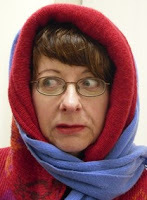 Nowadays when authors' books go OOP (Out Of Print) the books don't necessarily have to vanish. The digital technology of POD (Print on Demand) has made it much easier for authors to reprint their own books. However, all is not quite as easy as might be presumed. Many thanks to this month's guest blogger, Susan Price, who tells us her story of republishing a popular illustrated book and how this lead to further Indie books.
Nowadays when authors' books go OOP (Out Of Print) the books don't necessarily have to vanish. The digital technology of POD (Print on Demand) has made it much easier for authors to reprint their own books. However, all is not quite as easy as might be presumed. Many thanks to this month's guest blogger, Susan Price, who tells us her story of republishing a popular illustrated book and how this lead to further Indie books.With her first book accepted at age 16, Susan's books have since collected many awards, including The Carnegie Medal. Although best known for the young adult genre and her Sterkarm books, Susan has also written books for younger readers.
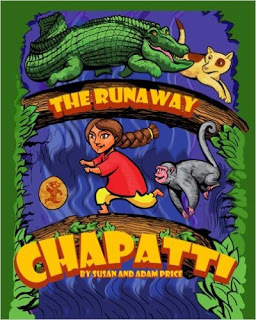 New edition of The Runaway Chapatti,
New edition of The Runaway Chapatti, by Susan and Adam Price
Some years ago now, I worked with Cambridge University Press’ education branch to make early reader texts. It wasn’t just a matter of telling a story – certain sounds had to be emphasised, and some picked out in large speech bubbles, to encourage recognition and memory.
CUP asked me to retell The Runaway Chapatti and it was great fun. It was published as a very large book – nearly as big as the small children who were to read it — and with wonderful, bright illustrations.
It proved to be very popular but, as is the way of these things, CUP let it go out of print.
Ever since then I’ve had regular emails from parents and teachers, asking where they can find copies — that is, copies costing less than the £89 being charged on Amazon market place.
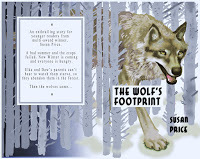 I was used to this. Another book of mine,
The Wolf’s Footprint
, was popular in primary schools and after it went out of print there was a small but constant stream of emails from teachers and parents, asking me where they could buy copies.
I was used to this. Another book of mine,
The Wolf’s Footprint
, was popular in primary schools and after it went out of print there was a small but constant stream of emails from teachers and parents, asking me where they could buy copies.So I decided to take the book from OOP to POD – print on demand.
My rights in the book had reverted to me — but that only meant the words. I couldn’t simply take the book and bung it up on Amazon as a self-published book, because the lay-out belonged to its original publisher. The margin widths, the font they’d chosen, the whole look of the book had been bought and paid for by them.
And, of course, the illustrations were the copyright of the artist.
Some self-published writers have asked their publisher to grant them the right to use the old cover — which is often the property of the publisher rather than the artist, having been bought outright. In some cases, the publisher grants permission, in others they don’t. Some writers also negotiate with the artists, and use the same illustrations.
I didn’t want to go that route. I didn’t want to spend weeks waiting for a reply from a publisher, and then be told, ‘No.’
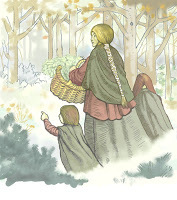 The Wolf's Footprint,
The Wolf's Footprint, illustration by Andrew PrinceAnd if I was going to be an Indie, I wanted my books to look Indie, and not exactly the same as the previous edition.
Nor was finding artists going to a problem. I have two brothers, Andrew and Adam. Both are talented artists.
I asked my brother, Andrew Price, to illustrate The Wolf’s Footprint and it’s now available again, as an e-book and paperback. It sells steadily, here and in America, in both formats.
So, I thought, why not republish The Runaway Chapatti?
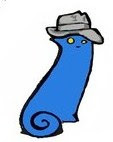 Blott, Adam PriceAndrew was busy, so I asked Adam, if he would like to do the new illustrations. Adam had already done a series of Blott cartoons for my website, so I knew his style: the compact chunkiness, the lively sense of movement, the characterisation. Yes, I’m biased, but I love his illustrations.
Blott, Adam PriceAndrew was busy, so I asked Adam, if he would like to do the new illustrations. Adam had already done a series of Blott cartoons for my website, so I knew his style: the compact chunkiness, the lively sense of movement, the characterisation. Yes, I’m biased, but I love his illustrations.Adam was enthusiastic, though he made it clear that he would be doing it his way, and not copying the original. I wouldn’t want anything else. I gave him the text and let him get on with it.
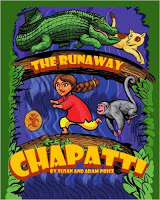 Some months later he came to my house with several large boards, glowing with colour, which he stood around the room, leaning against chairs. I was glad I’d asked him to do it.
Some months later he came to my house with several large boards, glowing with colour, which he stood around the room, leaning against chairs. I was glad I’d asked him to do it.The text of the book hasn’t changed much, and we hope that people will find it as entertaining as its original. (Find the new The Runaway Chapatti here.)
We would have loved to make our book as large as the original, but we used Amazon’s CreateSpace. The largest size which Amazon produces is 11 inches by 8 (roughly 28 cms by 20cms. Amazon deal in inches.) We may look into publishing a larger version in the future.
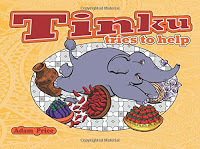 Tinku tries to help by Adam PriceUsing what he learned from our chapatti adventure, Adam went on to write and illustrate his own picture book – with a little influence from Pratibha, his wife, who loves elephants. Drawing on his experience of visiting India with Patti, for family weddings, Adam wrote Tinku Tries To Help, the tale of a baby elephant desperate to help with preparations for the Maharajah’s wedding day. (Mysteriously, this book, only published last month, is already being offered for £24, and even £210, by other sellers on Amazon when Adam is only asking £5.99. What are this other sellers doing? — Adding platinum dust?
Tinku tries to help by Adam PriceUsing what he learned from our chapatti adventure, Adam went on to write and illustrate his own picture book – with a little influence from Pratibha, his wife, who loves elephants. Drawing on his experience of visiting India with Patti, for family weddings, Adam wrote Tinku Tries To Help, the tale of a baby elephant desperate to help with preparations for the Maharajah’s wedding day. (Mysteriously, this book, only published last month, is already being offered for £24, and even £210, by other sellers on Amazon when Adam is only asking £5.99. What are this other sellers doing? — Adding platinum dust?Tinku’s story begins:
In the shadow of the mystical mountains,
Deep in the tiger-haunted jungle,
Stood a city of flowers and fountains,
That was home to the marvelous Mogul.
In his palace of marble and jade,
With domes and spires of golden glory,
Tinku the elephant lived and played,
Now listen as I tell her story.
Tinku meets failure after failure as she tries to find a way to help, but when her mother discovers her weeping over all the set-backs, she is told:
So you didn’t get it right first time,
Don’t give up or lose heart,
You see, it’s not success or pride or fame,
But trying that’s the important part.
A fabulous future is what I see,
For you, oh my gifted girl.
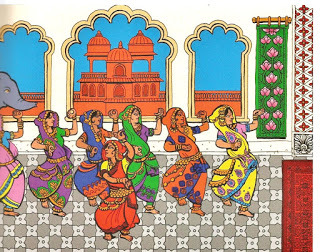
But my daughter is what you’ll always be,
And to me that is worth the world.
So if you dance or guard the king,
Sit still and quiet, or play music loud,
Know you are my everything,
And I am so very proud.
On the very last page, we are told:
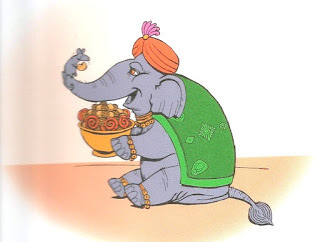 …There is only one more thing to say,
…There is only one more thing to say,About me, (Tinku’s) good and faithful friend.
For you may ask me how I learned this rhyme,
What was said, by whom and where,
I watched it happen at the time.
On every page you’ll find me there! — A little mouse!
And this sends us back to the very first page, to hunt for the mouse, who is hidden somewhere in the detailed illustrations. I have to say, I wish I’d written this, and I’m very proud of my brother.
Then my brother Andrew suggested we should work together on The Billy Goats Gruff — he knows I’ve always been a sucker for the story, a masterpiece of narrative tension.
Contributors to this blog won’t need telling how much hard work goes into writing and illustrating a picture book — but it surprised me a little.
Don’t think that I dismiss ‘writing children’s books’ as easy — very far from it!
I know how much work and discussion goes into these ‘little books,’ how much knowledge of the teaching of reading and the psychology of learning. Quite apart from the skill needed to simply tell a story!
But, before this, I was involved only in providing the text. I handed that over to a publisher, and saw nothing of the artist’s work.
But I’ve worked closely with Andrew on our Billy Goats. The story-boarding, discussions, text-changes and the re-working of illustrations have taken months. It’s been fascinating, exciting, frustrating, exhausting — and enormous fun. But definitely work. Detailed work, demanding concentration and lots of thought.
I respected the writers and illustrators of picture books before — but my admiration has certainly grown!
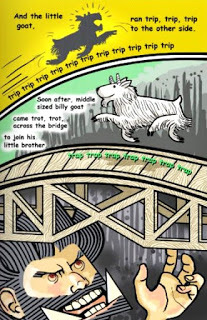 We’re nearing completion of the Three Billy Goats Gruff. Andrew wants to use a comic-book style of telling, so there are many speech-bubbles and also ‘sound-effects.’ The ‘trip-trip’, ‘trot-trot’ and ‘tramp-tramp’ of the goats’ hooves will be spelt out — which helps with recognition of the ‘tr’ sound. Here’s a taster.
We’re nearing completion of the Three Billy Goats Gruff. Andrew wants to use a comic-book style of telling, so there are many speech-bubbles and also ‘sound-effects.’ The ‘trip-trip’, ‘trot-trot’ and ‘tramp-tramp’ of the goats’ hooves will be spelt out — which helps with recognition of the ‘tr’ sound. Here’s a taster.
Oh, and what the heck — I may as well end with a blatant plug. My brothers also produce greetings cards and Christmas cards, which can be seen here, in their Etsy shop.
~ Susan Price
So, republishing The Runaway Chapatti lead to Tinku, which lead to The Three Billy Goats Gruff, and these indie publishing ventures have involved The Three Prices (Susan, Andrew and Adam Price).
Published on November 16, 2015 00:06
November 10, 2015
And So To Bed, by Pippa Goodhart
One of the key times of day when children and adults share picture books is bedtime. In many families the sharing of a book or two is part of the bedtime routine that winds a child down ready for sleep. A bath, a mug of milk, teeth cleaning, then snuggle together and open up another world in which to share some story experience. The book might be funny or moving or interesting or comforting, or a combination of any of those things. It might be a new experience, or it may well be a favourite one being shared in same way for the umpteenth time. Whether wild or serious, familiar or new, parents often appreciate a picture book story ending with the characters settling down to sleep. I’ve done it myself. You Choose and Just Imagine and Three Little Ghosties all end with a last spread showing the characters tucked-up in bed.
But should the whole book have the single aim of sending your child to sleep?
There’s been a lot of exposure recently for a self-published runaway bestseller picture book whose success is down to the book’s ability to put a child to sleep. The Rabbit Who Wants To Fall Asleep is a strange picture book to read. You are given instruction at the start as to how to read the text, emphasising certain words, inserting your child’s name, drawing-out other phrases. The story text is very much longer than most picture book texts. It takes twenty to twenty-five minutes to read (look on youtube if you want to hear it in action). [image error]
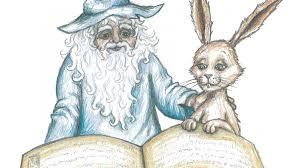 [image error][image error]The book's pictures are, well, amateurish (even in the new Ladybird edition), but you are told that you shouldn’t really be showing the pictures to your child in any case. They need to be lying down, ready to sleep. The cognitive tricks used by the Swedish behavioural psychologist author of this book, Carl-Johan Forssen Ehrlin, make the child keep focussing on the rabbit character’s aim through the story; going to sleep. The linking of names makes the child identify with Roger the rabbit (to be said slowly as Roooooggggeeeer), and the repetition of the words ‘sleep’ and ‘drowsy’ and ‘now’ and ‘yawn’ all do their work. ‘The eyelids are as heavy as stones, heavy, heavy, so heavy,’ says Roger. It’s an odd text to read, and the story is boring. That’s the point. If it was exciting, it would wake the child up. My children are grown-up now, but I quite see the place for this tool of a book. It can be a painless way for adults to get young children to sleep with minimal fuss. But, please, could they be read a proper picture book story before you start on that one? A story with characters one cares about, with humour and surprises and delight and things to think about? And maybe that sort of book can lead on to happy slumber too?
[image error][image error]The book's pictures are, well, amateurish (even in the new Ladybird edition), but you are told that you shouldn’t really be showing the pictures to your child in any case. They need to be lying down, ready to sleep. The cognitive tricks used by the Swedish behavioural psychologist author of this book, Carl-Johan Forssen Ehrlin, make the child keep focussing on the rabbit character’s aim through the story; going to sleep. The linking of names makes the child identify with Roger the rabbit (to be said slowly as Roooooggggeeeer), and the repetition of the words ‘sleep’ and ‘drowsy’ and ‘now’ and ‘yawn’ all do their work. ‘The eyelids are as heavy as stones, heavy, heavy, so heavy,’ says Roger. It’s an odd text to read, and the story is boring. That’s the point. If it was exciting, it would wake the child up. My children are grown-up now, but I quite see the place for this tool of a book. It can be a painless way for adults to get young children to sleep with minimal fuss. But, please, could they be read a proper picture book story before you start on that one? A story with characters one cares about, with humour and surprises and delight and things to think about? And maybe that sort of book can lead on to happy slumber too?[image error]There are numerous picture books with sleeping as a theme, but which also offer really good stories and wonderful illustrations. I fondly remember A Song For Little Toad, written by wonderful Vivian French and illustrated with great beauty by Barbara Firth. In that story we hear the lullaby songs of different riverside animals and birds, none of which work until Mummy Toad sings her own song to her little one. ‘Croak, croak, croak. Croak, my little darling’, I seem to remember. [image error]That book is now out of print (please bring it back, Walker Books!), but Barbara Firth again, this time working with Martin Waddell, also created the great favourite Can’t You Sleep, Little Bear? in which Big Bear takes Little Bear outside the cave to look at the stars in the sky before Little Bear is able to settle to sleep.[image error]
I’ve recently discovered The World Champion Of Staying Awake by Sean Taylor and Jimmy Liao in which little Stella has problems getting her naughty toys off to sleep, and of course by the end is herself fast asleep, as are they.
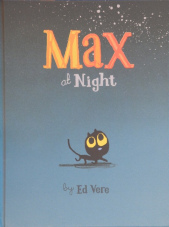 And there's Ed Vere's lovely new Max At Night as he tries to find the moon to tell it goodnight. Full of wonderfully sleepy monotone pictures.My own experience was that you could bore a child to sleep with almost any text if you read it in a boring way, and maybe that boring characteristic is what makes the classic Goodnight Moon by Margaret Wise Brown such a lasting favourite?
And there's Ed Vere's lovely new Max At Night as he tries to find the moon to tell it goodnight. Full of wonderfully sleepy monotone pictures.My own experience was that you could bore a child to sleep with almost any text if you read it in a boring way, and maybe that boring characteristic is what makes the classic Goodnight Moon by Margaret Wise Brown such a lasting favourite? What are your favourite bedtime picture books, and why?
Published on November 10, 2015 16:30
November 6, 2015
Seven secret rules of being an author - Moira Butterfield
I’ve been thinking about the less obvious aspects of being an author. From my own experience over the years I’ve thought of seven hidden rules. They’re not in any order of priority. I hope at least one of them helps you in the future, and I would love to hear your own 'less obvious' rule additions or thoughts on my thoughts.
1. Don’t talk about the plot of your book too much. Talk about the concepts.
I find if I talk too much about a story I’m working on, it begins to die. I think my brain decides it’s finished when it’s not. However, I do think that discussing the concepts behind a story is helpful. They’re the underlying truths you want to present.
2. Remember who you’re writing for.Always. Who’s going to buy your book and who’s going to read it? In picture books you’re writing for a reading team – adult and child. You must engage both.
3. Have an answer for the following questions that I will guarantee you will get at some point.
“Have you written a book that I would know?” This is code for “Are you famous?”. Suggested answer: “Possibly, if you read with children. I write xxxx books (insert type of writing).” Then ask the person about their own reading experiences, thus moving them on from the fame fixation.
“Do you make any money?” The person who asks this is rude and nosy! Suggested answer: “Yes, thanks.” (Even if you don’t). Then move away from this person or change the subject.
Is this a rule? I'm not sure - Sometimes (usually at a party) I meet men who make default rude jokes about children’s stories, involving silly innuendo (often to do with Captain Pugwash) as soon as they are mentioned. I really don’t know why this is. Is this a secret rule of being a children’s author or is it just me this happens to? (Embarrassing if that’s the case!).
4. Don’t feel bitter about others. You may read a book that has been highly-praised and you think it is rubbish and it makes you angry that the person who produced it has been lauded. It happened to me recently. I heard good things about a picture book so I bought it. It looked good but the text was very wrong for the age-group and actually unusable. I tried it with my young 3 year-old friend but it was totally misdirected. We went back grumpily to Hairy McClary. You may think ‘how can this be?’ and gnash your teeth. It doesn’t matter. It happens and it always will. Move on. Ditto children's books written by celebrities. Life's too short to get upset about these things and there's nothing you can do about them. (I'd like to get my money back for that crap picture book, though.)
5. Seek out other genuinely creative people.These people need not necessarily be other writers. They could well be local people being creative in a different field, but with an imaginative mindset (e.g: musician, artist, poet, playwright). These people will, hopefully, inspire you without pressurizing you. You can talk about your creative urges and setbacks with them without feeling an idiot.
6. Don’t agree to read other people’s work, unless you are in a genuinely supportive creative group (see 5).That means saying no to your neighbour, your kid’s teacher, your dentist, your in-laws, your relatives, distant friends of friends etc, etc….All or any of whom may want you to see their book idea. From experience they are unlikely to listen to your advice. If you tell the truth about it, they may get very offended because they are not used to treating creative criticism constructively.
Suggested reply: “I’m sorry. I don’t read other works-in-progress. To do it properly takes up a lot of time that I don’t have, and it’s hard to give creative criticism to a personal contact. It’s much better for you if you use a professional editorial agency who could help you in depth. I’ll send you a link to a list.”
It will be much better for them, and for you, too. I know it's hard to say no. You don't want to seem mean. But saying yes spells trouble. I warned you.
7. Don’t beat yourself up if you feel unhappy about work.There is definitely such a thing as creative unhappiness. In fact, it’s a regular feeling for a number of professional creatives I know who work in different fields. When it comes upon you, you probably need to plan in some time away – a few days if you possibly can - walking, thinking, relaxing, going to exhibitions – whatever is your relaxing bag. Then go to option 6 and find some positive creative souls to be with.
If I add any more rules I'll be breaking a important one – Don’t bore people by writing too much in a blog! So it’s over to you. Do you have some more ‘secret rules’ of being an author, that could help others?
Moira Butterfield has been a children's author and editor for her entire working career. She has recently been reading picture books with her great-niece, a very blunt and no-nonsense 2 year old critic. They have found between them that rule 2 is broken annoyingly often.
Moirabutterfield.com@moiraworld
1. Don’t talk about the plot of your book too much. Talk about the concepts.
I find if I talk too much about a story I’m working on, it begins to die. I think my brain decides it’s finished when it’s not. However, I do think that discussing the concepts behind a story is helpful. They’re the underlying truths you want to present.
2. Remember who you’re writing for.Always. Who’s going to buy your book and who’s going to read it? In picture books you’re writing for a reading team – adult and child. You must engage both.
3. Have an answer for the following questions that I will guarantee you will get at some point.
“Have you written a book that I would know?” This is code for “Are you famous?”. Suggested answer: “Possibly, if you read with children. I write xxxx books (insert type of writing).” Then ask the person about their own reading experiences, thus moving them on from the fame fixation.
“Do you make any money?” The person who asks this is rude and nosy! Suggested answer: “Yes, thanks.” (Even if you don’t). Then move away from this person or change the subject.
Is this a rule? I'm not sure - Sometimes (usually at a party) I meet men who make default rude jokes about children’s stories, involving silly innuendo (often to do with Captain Pugwash) as soon as they are mentioned. I really don’t know why this is. Is this a secret rule of being a children’s author or is it just me this happens to? (Embarrassing if that’s the case!).
4. Don’t feel bitter about others. You may read a book that has been highly-praised and you think it is rubbish and it makes you angry that the person who produced it has been lauded. It happened to me recently. I heard good things about a picture book so I bought it. It looked good but the text was very wrong for the age-group and actually unusable. I tried it with my young 3 year-old friend but it was totally misdirected. We went back grumpily to Hairy McClary. You may think ‘how can this be?’ and gnash your teeth. It doesn’t matter. It happens and it always will. Move on. Ditto children's books written by celebrities. Life's too short to get upset about these things and there's nothing you can do about them. (I'd like to get my money back for that crap picture book, though.)
5. Seek out other genuinely creative people.These people need not necessarily be other writers. They could well be local people being creative in a different field, but with an imaginative mindset (e.g: musician, artist, poet, playwright). These people will, hopefully, inspire you without pressurizing you. You can talk about your creative urges and setbacks with them without feeling an idiot.
6. Don’t agree to read other people’s work, unless you are in a genuinely supportive creative group (see 5).That means saying no to your neighbour, your kid’s teacher, your dentist, your in-laws, your relatives, distant friends of friends etc, etc….All or any of whom may want you to see their book idea. From experience they are unlikely to listen to your advice. If you tell the truth about it, they may get very offended because they are not used to treating creative criticism constructively.
Suggested reply: “I’m sorry. I don’t read other works-in-progress. To do it properly takes up a lot of time that I don’t have, and it’s hard to give creative criticism to a personal contact. It’s much better for you if you use a professional editorial agency who could help you in depth. I’ll send you a link to a list.”
It will be much better for them, and for you, too. I know it's hard to say no. You don't want to seem mean. But saying yes spells trouble. I warned you.
7. Don’t beat yourself up if you feel unhappy about work.There is definitely such a thing as creative unhappiness. In fact, it’s a regular feeling for a number of professional creatives I know who work in different fields. When it comes upon you, you probably need to plan in some time away – a few days if you possibly can - walking, thinking, relaxing, going to exhibitions – whatever is your relaxing bag. Then go to option 6 and find some positive creative souls to be with.
If I add any more rules I'll be breaking a important one – Don’t bore people by writing too much in a blog! So it’s over to you. Do you have some more ‘secret rules’ of being an author, that could help others?
Moira Butterfield has been a children's author and editor for her entire working career. She has recently been reading picture books with her great-niece, a very blunt and no-nonsense 2 year old critic. They have found between them that rule 2 is broken annoyingly often.
Moirabutterfield.com@moiraworld
Published on November 06, 2015 00:50
October 31, 2015
Halloween Quiz by Malachy Doyle
As it's Halloween, and as I'm still a bit jet-lagged having only just got back from Grandparent duty over in Wales, here's a quiz.
The three year old was adamant he wanted to dress up as a rhino, by the way. And his dad had made a pumpkin into the monster from my picture book Hungry, Hungry, Hungry - which gave me the idea for what follows.
Here's eight well-known Halloween-ish picture books. I'll show you a foreign edition cover and you have to tell me the title it went under in English.
The prize is I don't come round to your place trick or treating. OK?
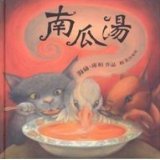
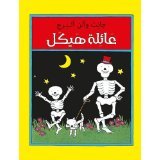
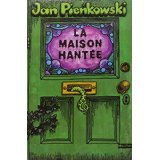
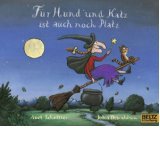
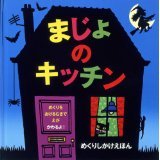

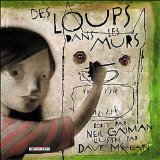
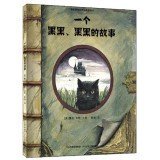
The three year old was adamant he wanted to dress up as a rhino, by the way. And his dad had made a pumpkin into the monster from my picture book Hungry, Hungry, Hungry - which gave me the idea for what follows.
Here's eight well-known Halloween-ish picture books. I'll show you a foreign edition cover and you have to tell me the title it went under in English.
The prize is I don't come round to your place trick or treating. OK?








Published on October 31, 2015 12:27
October 27, 2015
Thinking in scenes - Lynne Garner
 One of my dads shots - he used to take promo shots for the theatre
One of my dads shots - he used to take promo shots for the theatreSo guess where I spent some of my childhood? Earlier this month as I read Abie’s fab post ‘Ten ways I use panto for picture books’ I began remembering one of my first jobs and how it now helps me write my picture books. During my late teens and early twenties I worked in the local theatre as wardrobe mistress. It was a job I loved, even if it was hard work. When we had a visiting company I often helped with their costumes. This meant late nights (repairing costumes on the run and once the curtain fell collecting those that needed washing) then early mornings (mending and washing/drying costumes so they were ready for that evenings performance). However it also gave me to opportunity to watch a huge variety of plays, both good and bad.
Why am I telling you this? Well I now use some of the knowledge I gained from watching those plays when I work on a new story. I relate each double page spread in a picture book to a scene in a play. In a play each scene must:Keep the audience entertained and make them want to continue watching the playMove your character a step closer to their goalEncourage the audience to invest in the characters, even if they don’t like themGive the characters something new to do and sayThese points are exactly the same for each double page spread in a picture book. If each spread doesn’t entertain your reader, different enough to advance your story line towards a conclusion, make your reader want to turn the page, create some form of emotion in them then they’re not going to finish reading your book. They’re also unlikely to want to purchase your next book. So perhaps when you’ve finished your current work in progress why not try breaking it down into scenes. If the scene you've created doesn’t fulfil the above then tweak until it does. Hopefully in this way your finished story will wow your reader and just as importantly that commissioning editor or agent.
Lynne
Don't read unless interested in blatant plug:My latest short story collection - Coyote Tales Retold is now up and selling on Amazon in ebook format.
My online courses with Women On Writing:
How to write A children's book and get published
5 picture books in 5 weeks
How to write a hobby-based how to book
Published on October 27, 2015 00:00



